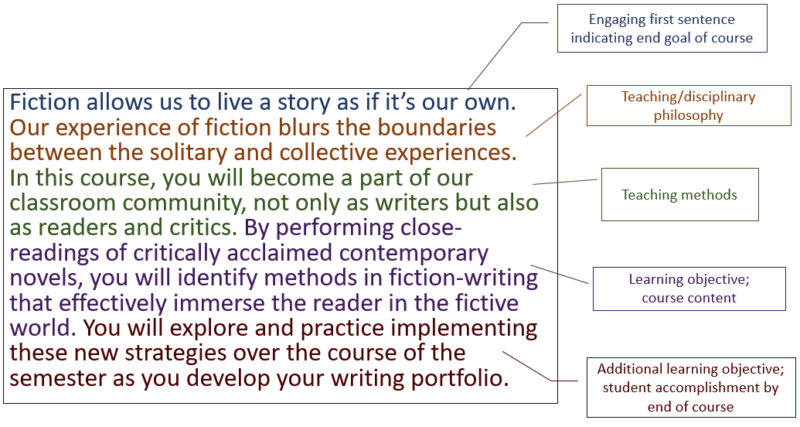How do you capture the attention of your students before they even set foot in your classroom? What makes an effective, enticing course description stand out from all the rest? While you probably have seen dozens of course descriptions by this point in your academic career, you may not have put much thought into how to write one in a way that captures your vision for the course. This post contains a few hints for writing an original and effective course description.
The Job of a Course Description
Your course description should answer two primary questions: why and what. Why should students take this course, and what will they experience as learners? Try to refrain from making yourself or the course itself the subject of your sentences. Keep your focus on what will students learn and do in the course.
Remember your audience. Your course description is primarily for the benefit of people who have not taken the course, so do not use abbreviations or technical language. In a description intended for students, you may use the first or second person (“we” or “you”). Also check whether your course description must meet any departmental or university requirements (e.g. maximum word length, list of prerequisites).
The First Sentence (or Two): Why
Starting your description with “This course explores…” or “In this course, you will learn…” is not only clichéd, but it also wastes the crucial first words of your description without conveying important information.
Start with the aim or goal of the course. Be intellectually bold here. Use your grant-writing skills to communicate the significance of the course to a non-specialist audience. How does your course matter to students’ intellectual development or personal lives? You might phrase it as a key question (e.g. “What makes us love reading stories?”) or a statement of the end goal of the course (e.g. “Fiction allows us to live a story as if it’s our own.”).
The Body: What
Then, use the rest of the course description to detail what the learning experience of students will be in your classroom. The exact format and content of this section is open-ended. Remember that the description is neither a set of learning goals nor a reading list. Keep the lists to a minimum and focus on the bigger picture. Some of the points you may wish to touch on include:
- Learning objectives
- Teaching methods
- Teaching philosophy
- Course content examples
- Final accomplishments
The following example demonstrates how you can mix and match the above categories to pack a significant amount of information into a short course description:

